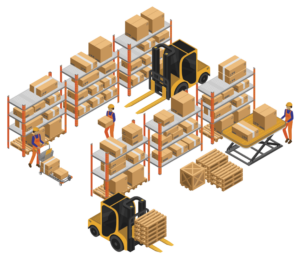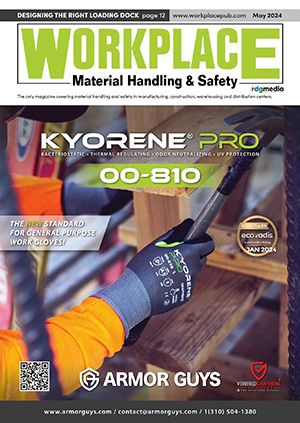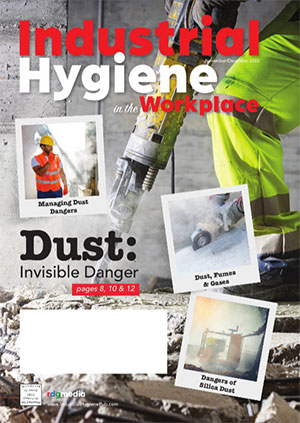Best Practices for Orderly Order Picking
Steps you can take to enhance customer satisfaction, reduce operational costs and achieve greater efficiency.
By: Tim Chileski, Contributor

Warehouse layouts should be optimized
for efficient picking and packing, including locating high-demand items for easy access.
The global warehousing market was valued at $281,531 million in 2023 and is expected to expand at a compound annual growth rate of (CAGR) of 7.27% to reach $429,019 million by 2028. Material handling is a critical aspect of the warehousing industry and involves order picking in warehouses and distribution centers.
Order picking is one of the central warehouse and distribution center operations processes. It involves selecting and gathering items from their storage locations to fulfill customer orders. This process is crucial for ensuring the right products are shipped to customers on time and accurately.
KEY STEPS
Order picking can be performed by robots, humans or a combination of the two by following these key steps:
- Companies receive orders from customers through various channels. These orders are processed and entered into the warehouse management system (WMS).
- Orders are typically prioritized based on order type, delivery deadlines and customer preferences.
- The WMS generates a picking list or work order, which specifies the items, quantities, and storage location from which the items need to be picked. Order retrievers use the picking list to complete order picking using a variety of methodologies, such as single order picking, batch picking, zone picking and wave picking. Batch picking is when multiple orders are picked simultaneously, reducing travel time. Sometimes warehouses are divided into zones, and order pickers are assigned to these zones to pick items from. Orders may be grouped into waves, with pickers working on one wave at a time.
- Order pickers use picking tools and equipment, such as handheld scanners, barcode readers, pick-to-light systems, conveyors, forklifts and pallet jacks. Pickers verify that they have selected the correct items in the correct quantities.
- Once all the items on an order are picked and verified, they are consolidated in a designated area for further processing, such as packing and labeling. Orders are packed in appropriate boxes or containers. Necessary documentation is added, like packing slips and labels.
- Once orders are picked, the WMS automatically updates inventory levels to maintain accurate records of stock on hand.
- Warehouse managers can receive reports and analytics on order picking performance to identify bottlenecks and optimize the entire process for efficiency and accuracy.
EFFICIENT ORDER PICKING
Efficient order picking can significantly impact productivity and customer satisfaction. To improve efficiencies in the order-picking process, companies need to create a warehouse layout that minimizes travel distances for workers. This involves classifying products into categories based on demand, with fast-moving items more accessible than slow-
moving products.
By implementing these material handling best practices for order picking, you can enhance your warehouse or distribution center operations’ efficiency, accuracy and safety, ultimately improving customer satisfaction and reducing operational costs.
Now that your orders are appropriately packaged and addressed to the right person and location, they are sent to an area within the warehouse to consolidate them. The orders may be consolidated and put on a pallet or shipped individually. Placing packages on a pallet aims to efficiently stack and secure multiple packages onto a pallet to optimize space utilization, reduce shipping costs and ensure safe transportation.
FULFILLMENT BEST PRACTICES
Fulfillment refers to receiving, processing and delivering customer orders efficiently and accurately. To meet customer expectations, companies need to follow best practices, such as:
- Managing inventory with accurate inventory records to prevent overstocking and understocking. Inventory locations can be optimized with the help of a third-party logistics (3PL) provider that knows a client’s demand requirements, order cycles and customer order history. Knowing where to hold inventory in the right amounts takes technology like network optimization tools that use data from across the supply chain to locate warehouses and inventory at suitable locations.
- Warehouse layouts should be optimized for efficient picking and packing, including locating high-demand items for easy access.
- Efficient picking methods must be implemented with clear instructions for pickers and packers to minimize errors. Proper packaging needs to be used to prevent damage during transit.
- 3PLs have expertise in selecting reliable carriers that meet your key performance indicators (KPIs), such as on-time orders. 3PLs also have an extensive network of vetted carriers they have worked with that can ensure the correct shipping times to meet customer delivery requirements. 3PLs can choose from various modes to get your orders to the right place at the right time for the best cost.
- Establish a returns management policy that is clear, easy-to-use and customer-friendly. Returns can be automated so that customers fill out their return documentation and submit it online. Don’t just waste the returned items. Put them back up for resale or refurbishment. Regularly inspect returned items for resale or refurbishment.
- Provide customers with order confirmation and tracking information. If there is going to be a delay in shipment, communicate this to the customer so they will know about the delay. Collect and act on customer feedback to continually improve fulfillment processes.
- Use sustainable packaging to prevent harming the environment. If your company has a sustainability initiative, a 3PL can select carriers with the same goals to reduce fuel usage and optimize routes to minimize carbon emissions.
By implementing these best practices in fulfillment and order picking, businesses can enhance customer satisfaction, reduce operational costs and achieve greater efficiency in their delivery operations. WMHS
Tim Chileski is a Carrier Relations Specialist at Nexterus, a leading 3PL focusing on small to medium-sized businesses. Nexterus provides solutions to complex business issues, applying its expertise and best-in-class technology to model, optimize and manage global supply chains. Learn more at www.nexterus.com.



